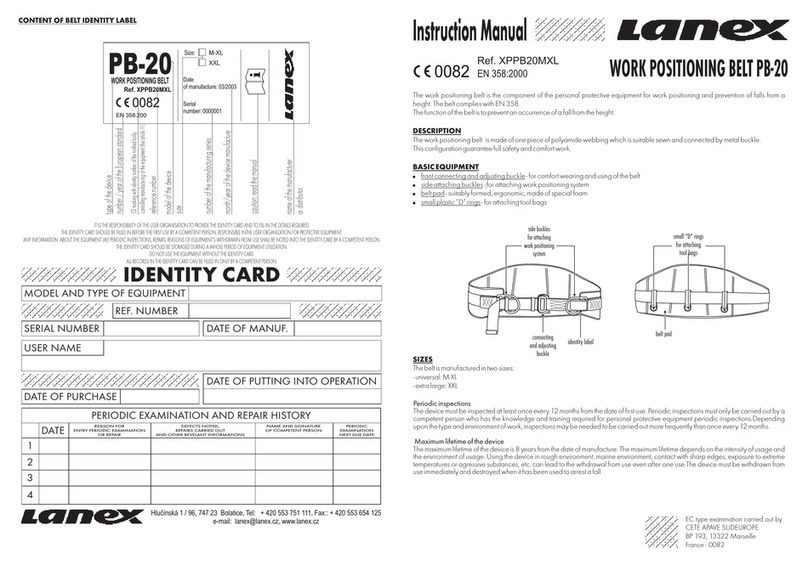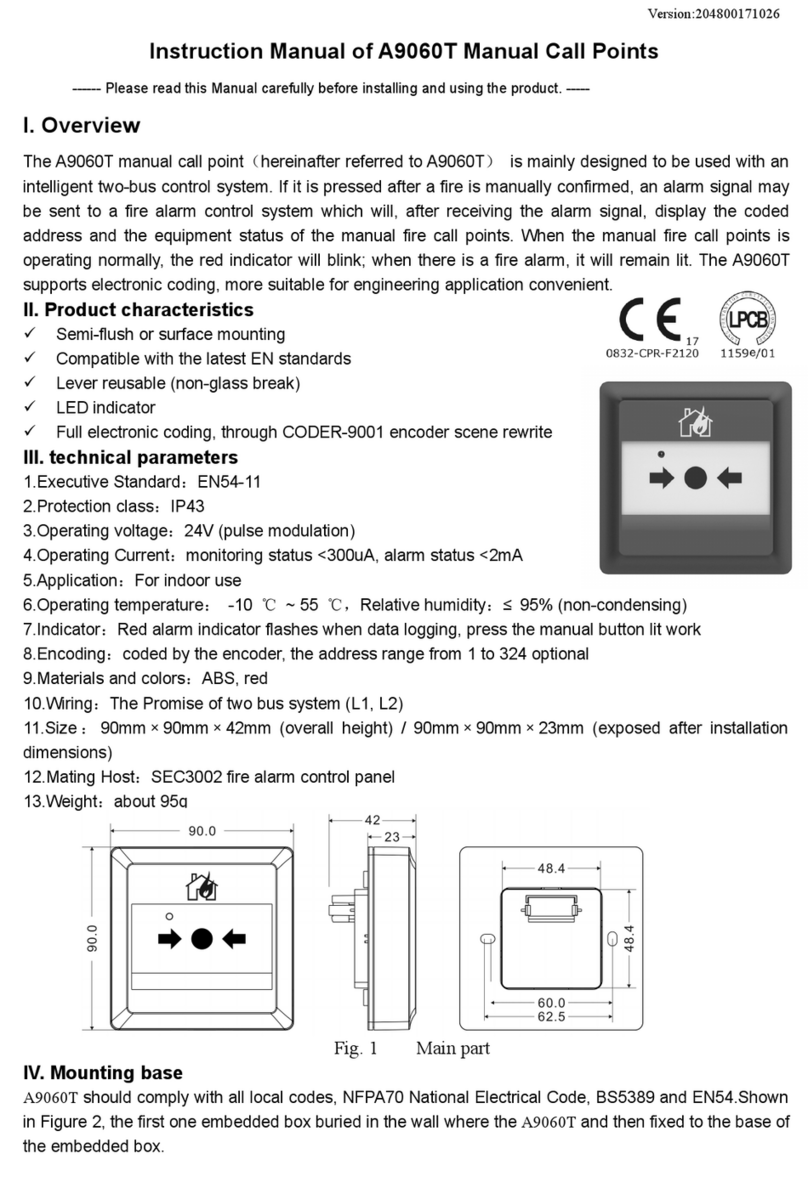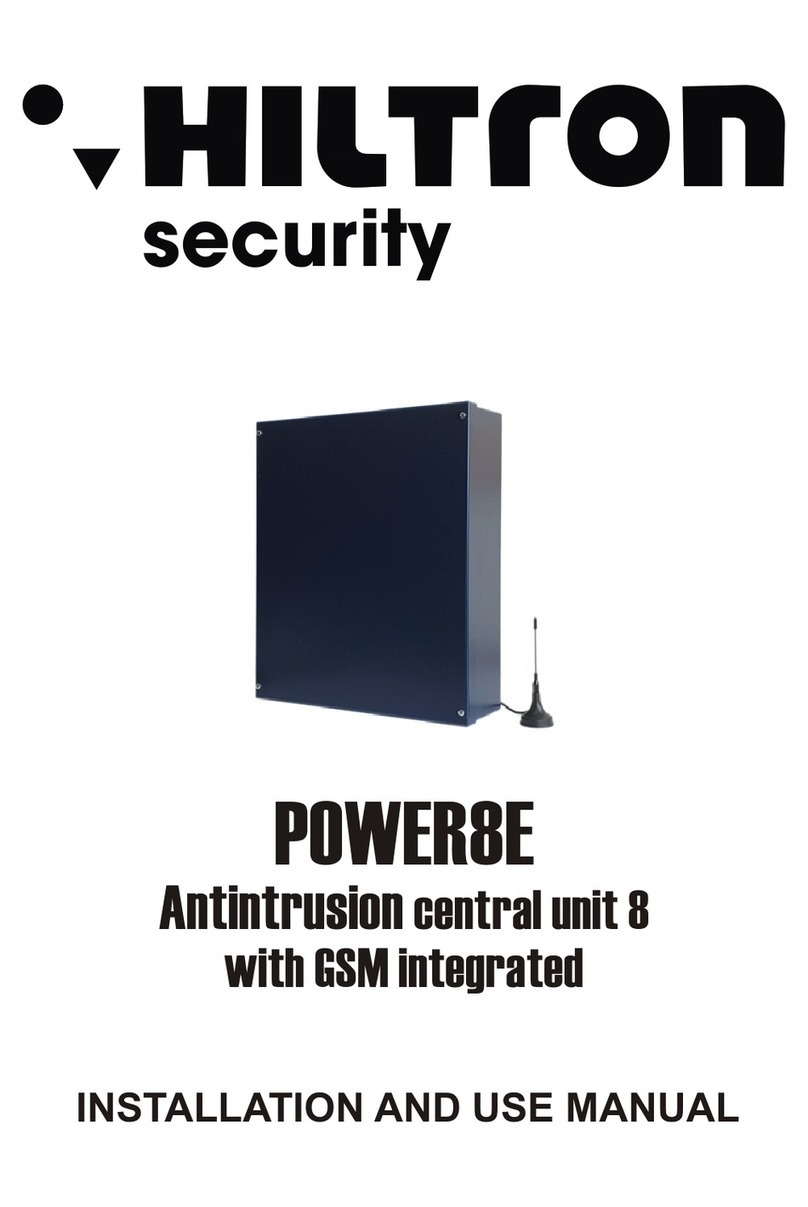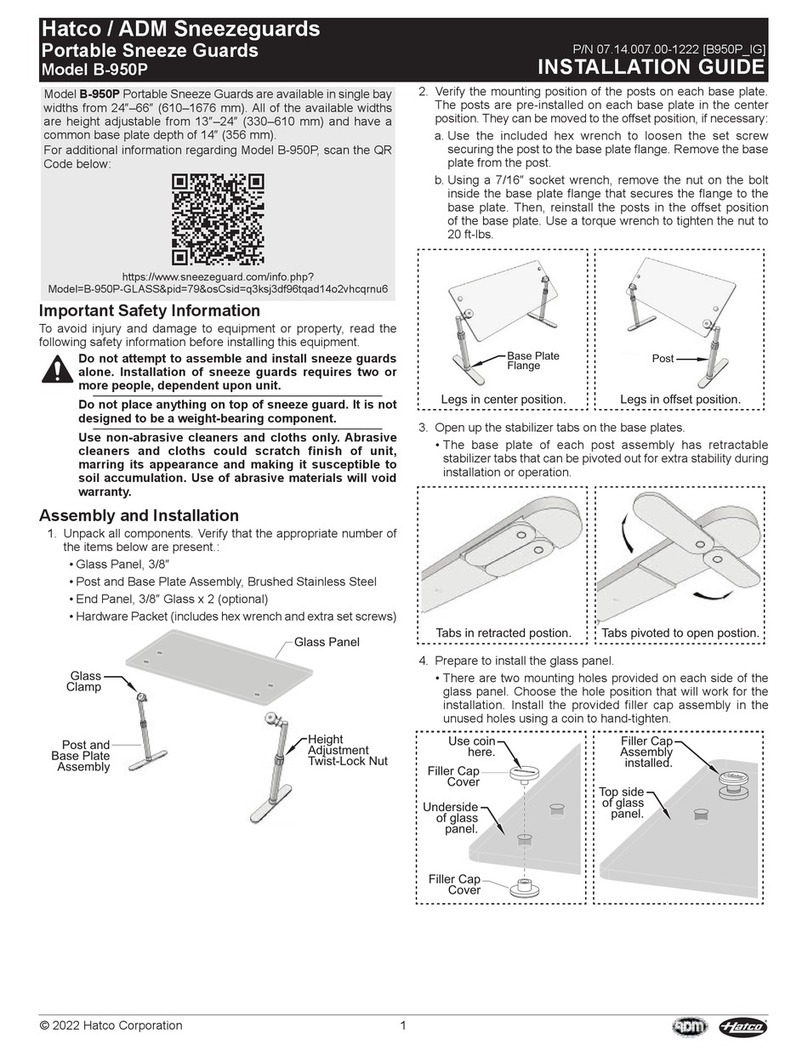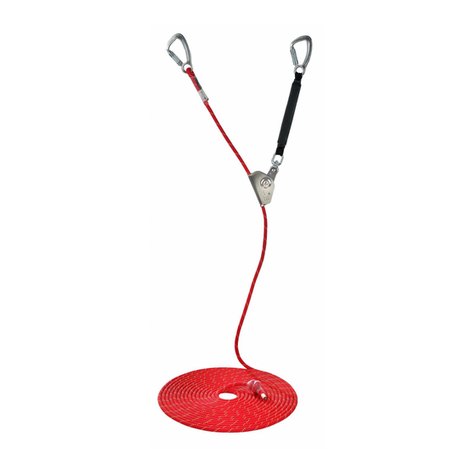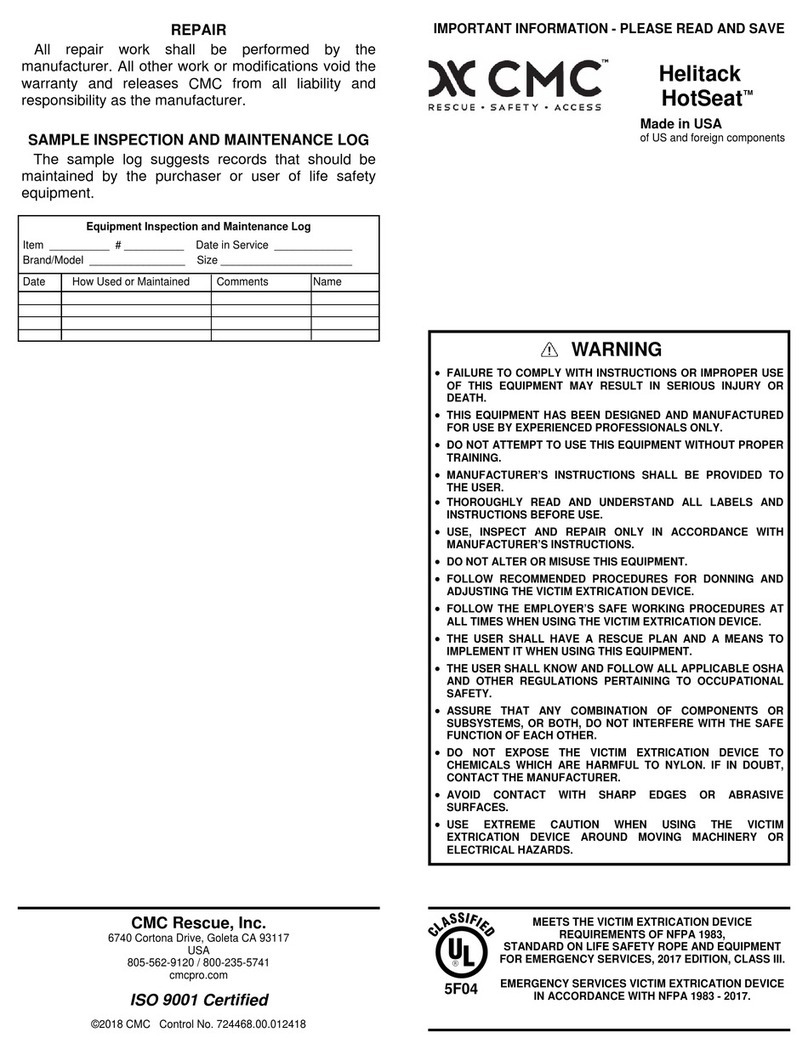
The P LGUARD GATE ALARM uses two delay modes which allow
the user to exit and enter the gate without the alarm sounding. These
two modes are explained below.
A. FIRST DELAY M DE: When the gate is opened the alarm
automatically goes into the first delay mode which gives you 7
seconds after the gate is opened to push the pass thru switch. If the
pass thru switch is not pushed within 7 seconds the alarm will sound
with the gate open or closed. To silence the alarm close the gate then
push the pass thru switch.
B. SEC ND DELAY M DE: When the gate is opened and the pass thru
switch is pushed within 7 seconds, this puts the gate alarm in the
second delay mode which allows you 14 seconds to go through the
gate and close it. When the gate is closed within 14 seconds, the
alarm will automatically reset. If the gate is not closed within 14
seconds, the alarm will sound.
NOTE: If the alarm sounds for approximately 5 minutes and the gate is
still open. The alarm horn will start to pulsate, 5 seconds N and 5
seconds FF. The alarm will continue to do this until an adult closes
the gate and pushes the PASS THRU switch on the gate alarm to
silence the alarm. If the alarm sounds for approximately 5 minutes
and the gate is closed, the alarm will reset.
INSTALLING THE 9V BATTERY
(FIG. 2)
Maximum Current Input = 19mA
9V c alkaline battery. Energizer No. 522 or Duracell No. MN1604
1.
A. Remove the assembly screw from the back of the gate alarm and
remove the top cover. (See Figure 2)
B. Pull down the battery spring and install the 9v battery (see figure 2).
N TE: If the battery spring is not in the correct position under the
battery, the alarm will not go back together.
C. When the 9v battery is installed, the LED will flash once every 10
seconds. When the alarm sounds, the LED will flash once every
second.
D. Reassemble the gate alarm with the assembly screw. N TE: nce
the battery is installed the alarm may sound accidentally until the
sensors are connected properly.
A. Determine the best location. The gate alarm must be installed at least
54” above the threshold of the gate.
B. With a pencil, mark 2 spots 2 1/2” apart vertically (up & down) where
the alarm will be mounted. These 2 marks are where the 2 larger
supplied screws will be inserted to hang the gate alarm.
C. Insert the 2 larger supplied screws on the 2 marks. Leave about 5/32”
(not including the head of the screw) exposed.
D. Hang the gate alarm on the mounted screws and pull downward until
the screws are positioned in the small end of the hanger holes in the
back of the alarm.
The Poolguard Gate Alarm is activated by a sensor which consists of
two parts. ne part contains the sensor magnet. The sensor switch is
permanently connected to the sensing wire that comes from the
Poolguard Gate Alarm. Using the screw supplied, the sensor switch is
installed on the stationary part (usually the frame) of the fence, and the
sensor switch should be on the side near the top of the fence post
(Fig. 1), but not on the side which is hinged. To function properly the
sensor switch and sensor magnet should line up with each other, and a
spacing of 2 ” between the sensor switch and sensor magnet is
acceptable. If either the gate or the fence post is made of steel this may
limit spacing between sensor switch and sensor magnet to 1 1/4”, test
your alarm. If spacing of 2” is needed, use 1/4” thick wood or plastic
shims under the sensor switch and sensor magnet.
INSTALLING GATE SENSOR
(FIG. 1)
3.
OPERATING YOUR GATE ALARM
(FIG. 1)
4.
F igure 2
www.poolguard.com
IN GR UND P L ALARM
WITH REM TE RECEIVER
D R ALARM
WITH TRANSMITTER
“SAFETY BU Y”
AB VE GR UND P L ALARM
WITH REM TE RECEIVER
INSTALLING POOLGUARD GATE ALARM
(FIGS. 1 & 2)
2.
D R ALARM
www.poolguard.com
050517 GAPT2 Manual:Layout 1 5/5/17 10:52 AM Page 2
